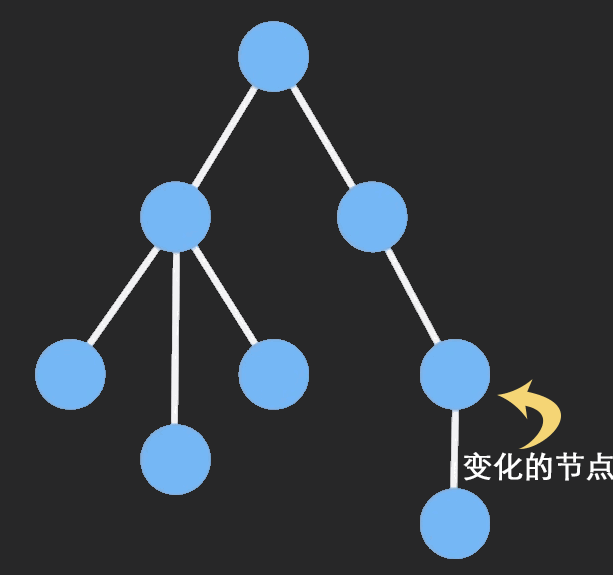Immer 中文文档
前言
Immer 是 mobx 的作者写的一个 immutable 库,核心实现是利用 ES6 的 proxy,几乎以最小的成本实现了 js 的不可变数据结构,简单易用、体量小巧、设计巧妙,满足了我们对JS不可变数据结构的需求。
无奈网络上完善的文档实在太少,所以自己写了一份,本篇文章以贴近实战的思路和流程,对 Immer 进行了全面的讲解。
目录
数据处理存在的问题
先定义一个初始对象,供后面例子使用:
首先定义一个currentState对象,后面的例子使用到变量currentState时,如无特殊声明,都是指这个currentState对象
let currentState = {p: {x: [2],},}
哪些情况会一不小心修改原始对象?
// Q1let o1 = currentState;o1.p = 1; // currentState 被修改了o1.p.x = 1; // currentState 被修改了// Q2fn(currentState); // currentState 被修改了function fn(o) {o.p1 = 1;return o;};// Q3let o3 = {...currentState};o3.p.x = 1; // currentState 被修改了// Q4let o4 = currentState;o4.p.x.push(1); // currentState 被修改了
解决引用类型对象被修改的办法
- 深度拷贝,但是深拷贝的成本较高,会影响性能;
- ImmutableJS,非常棒的一个不可变数据结构的库,可以解决上面的问题,But,跟 Immer 比起来,ImmutableJS 有两个较大的不足:
- 需要使用者学习它的数据结构操作方式,没有 Immer 提供的使用原生对象的操作方式简单、易用;
- 它的操作结果需要通过
toJS方法才能得到原生对象,这使得在操作一个对象的时候,时刻要主要操作的是原生对象还是 ImmutableJS 的返回结果,稍不注意,就会产生意想不到的 bug。
看来目前已知的解决方案,我们都不甚满意,那么 Immer 又有什么高明之处呢?
immer功能介绍
安装immer
欲善其事必先利其器,安装 Immer 是当前第一要务
npm i --save immer
immer如何fix掉那些不爽的问题
Fix Q1、Q3
import produce from 'immer';let o1 = produce(currentState, draft => {draft.p.x = 1;})
Fix Q2
import produce from 'immer';fn(currentState); // currentState 被修改了function fn(o) {return produce(o, draft => {draft.p1 = 1;})};
Fix Q4
import produce from 'immer';let o4 = produce(currentState, draft => {draft.p.x.push(1);})
是不是使用非常简单,通过小试牛刀,我们简单的了解了 Immer ,下面将对 Immer 的常用 api 分别进行介绍。
概念说明
Immer 涉及概念不多,在此将涉及到的概念先行罗列出来,阅读本文章过程中遇到不明白的概念,可以随时来此处查阅。
currentState
被操作对象的最初状态draftState
根据 currentState 生成的草稿状态,它是 currentState 的代理,对 draftState 所做的任何修改都将被记录并用于生成 nextState 。在此过程中,currentState 将不受影响nextState
根据 draftState 生成的最终状态produce 生产
用来生成 nextState 或 producer 的函数producer 生产者
通过 produce 生成,用来生产 nextState ,每次执行相同的操作recipe 生产机器
用来操作 draftState 的函数
常用api介绍
使用 Immer 前,请确认将immer包引入到模块中
import produce from 'immer'
or
import { produce } from 'immer'
这两种引用方式,produce 是完全相同的
produce
备注:出现PatchListener先行跳过,后面章节会做介绍
第1种使用方式:
语法:produce(currentState, recipe: (draftState) => void | draftState, ?PatchListener): nextState
例子1:
let nextState = produce(currentState, (draft) => {})currentState === nextState; // true
例子2:
let currentState = {a: [],p: {x: 1}}let nextState = produce(currentState, (draft) => {draft.a.push(2);})currentState.a === nextState.a; // falsecurrentState.p === nextState.p; // true
由此可见,对 draftState 的修改都会反应到 nextState 上,而 Immer 使用的结构是共享的,nextState 在结构上又与 currentState 共享未修改的部分,共享效果如图(借用的一篇 Immutable 文章中的动图,侵删):

自动冻结功能
Immer 还在内部做了一件很巧妙的事情,那就是通过 produce 生成的 nextState 是被冻结(freeze)的,(Immer 内部使用Object.freeze方法,只冻结 nextState 跟 currentState 相比修改的部分),这样,当直接修改 nextState 时,将会报错。
这使得 nextState 成为了真正的不可变数据。
示例:
const currentState = {p: {x: [2],},};const nextState = produce(currentState, draftState => {draftState.p.x.push(3);});console.log(nextState.p.x); // [2, 3]nextState.p.x = 4;console.log(nextState.p.x); // [2, 3]nextState.p.x.push(5); // 报错
第2种使用方式
利用高阶函数的特点,提前生成一个生产者 producer
语法:produce(recipe: (draftState) => void | draftState, ?PatchListener)(currentState): nextState
例子:
let producer = produce((draft) => {draft.x = 2});let nextState = producer(currentState);
recipe的返回值
recipe 是否有返回值,nextState 的生成过程是不同的:
recipe 没有返回值时:nextState 是根据 recipe 函数内的 draftState 生成的;
recipe 有返回值时:nextState 是根据 recipe 函数的返回值生成的;
let nextState = produce(currentState,(draftState) => {return {x: 2}})
此时,nextState 不再是通过 draftState 生成的了,而是通过 recipe 的返回值生成的。
recipe中的this
recipe 函数内部的this指向 draftState ,也就是修改this与修改 recipe 的参数 draftState ,效果是一样的。
注意:此处的 recipe 函数不能是箭头函数,如果是箭头函数,this就无法指向 draftState 了
produce(currentState, function(draft){// 此处,this 指向 draftStatedraft === this; // true})
patch补丁功能
通过此功能,可以方便进行详细的代码调试和跟踪,可以知道 recipe 内的做的每次修改,还可以实现时间旅行。
Immer 中,一个 patch 对象是这样的:
interface Patch {op: "replace" | "remove" | "add" // 一次更改的动作类型path: (string | number)[] // 此属性指从树根到被更改树杈的路径value?: any // op为 replace、add 时,才有此属性,表示新的赋值}
语法:
produce(currentState,recipe,// 通过 patchListener 函数,暴露正向和反向的补丁数组patchListener: (patches: Patch[], inversePatches: Patch[]) => void)applyPatches(currentState, changes: (patches | inversePatches)[]): nextState
例子:
import produce, { applyPatches } from "immer"let state = {x: 1}let replaces = [];let inverseReplaces = [];state = produce(state,draft => {draft.x = 2;draft.y = 2;},(patches, inversePatches) => {replaces = patches.filter(patch => patch.op === 'replace');inverseReplaces = inversePatches.filter(patch => patch.op === 'replace');})state = produce(state, draft => {draft.x = 3;})console.log('state1', state); // { x: 3, y: 2 }state = applyPatches(state, replaces);console.log('state2', state); // { x: 2, y: 2 }state = produce(state, draft => {draft.x = 4;})console.log('state3', state); // { x: 4, y: 2 }state = applyPatches(state, inverseReplaces);console.log('state4', state); // { x: 1, y: 2 }
state.x的值4次打印结果分别是:3、2、4、1,实现了时间旅行,
可以分别打印patches和inversePatches看下,
patches数据如下:
[{op: "replace",path: ["x"],value: 2},{op: "add",path: ["y"],value: 2},]
inversePatches数据如下:
[{op: "replace",path: ["x"],value: 1},{op: "remove",path: ["y"],},]
可见,patchListener内部对数据操作做了记录,并分别存储为正向操作记录和反向操作记录,供我们使用。
至此,Immer 的常用功能和 api 我们就介绍完了。
接下来,我们看如何用 Immer ,提高 React 、Redux 项目的开发效率。
用immer优化react项目的探索
首先定义一个state对象,后面的例子使用到变量state或访问this.state时,如无特殊声明,都是指这个state对象
state = {members: [{name: 'ronffy',age: 30}]}
抛出需求
就上面定义的state,我们先抛一个需求出来,好让后面的讲解有的放矢:
members 成员中的第1个成员,年龄增加1岁
优化setState方法
错误示例
this.state.members[0].age++;
只所以有的新手同学会犯这样的错误,很大原因是这样操作实在是太方便了,以至于忘记了操作 State 的规则。
下面看下正确的实现方法
setState的第1种实现方法
const { members } = this.state;this.setState({members: [{...members[0],age: members[0].age + 1,},...members.slice(1),]})
setState的第2种实现方法
this.setState(state => {const { members } = state;return {members: [{...members[0],age: members[0].age + 1,},...members.slice(1)]}})
以上2种实现方式,就是setState的两种使用方法,相比大家都不陌生了,所以就不过多说明了,接下来看下,如果用 Immer 解决,会有怎样的烟火?
用immer更新state
this.setState(produce(draft => {draft.members[0].age++;}))
是不是瞬间代码量就少了很多,阅读起来舒服了很多,而且更易于阅读了。
优化reducer
immer的produce的拓展用法
在开始正式探索之前,我们先来看下 produce 第2种使用方式的拓展用法:
例子:
let obj = {};let producer = produce((draft, arg) => {obj === arg; // true});let nextState = producer(currentState, obj);
相比 produce 第2种使用方式的例子,多定义了一个obj对象,并将其作为 producer 方法的第2个参数传了进去;可以看到, produce 内的 recipe 回调函数的第2个参数与obj对象是指向同一块内存。
ok,我们在知道了 produce 的这种拓展用法后,看看能够在 Redux 中发挥什么功效?
普通reducer怎样解决上面抛出的需求
const reducer = (state, action) => {switch (action.type) {case 'ADD_AGE':const { members } = state;return {...state,members: [{...members[0],age: members[0].age + 1,},...members.slice(1),]}default:return state}}
集合immer,reducer可以怎样写
const reducer = (state, action) => produce(state, draft => {switch (action.type) {case 'ADD_AGE':draft.members[0].age++;}})
可以看到,通过 produce ,我们的代码量已经精简了很多;
不过仔细观察不难发现,利用 produce 能够先制造出 producer 的特点,代码还能更优雅:
const reducer = produce((draft, action) => {switch (action.type) {case 'ADD_AGE':draft.members[0].age++;}})
好了,至此,Immer 优化 reducer 的方法也讲解完毕。
Immer 的使用非常灵活,多多思考,相信你还可以发现 Immer 更多其他的妙用!

